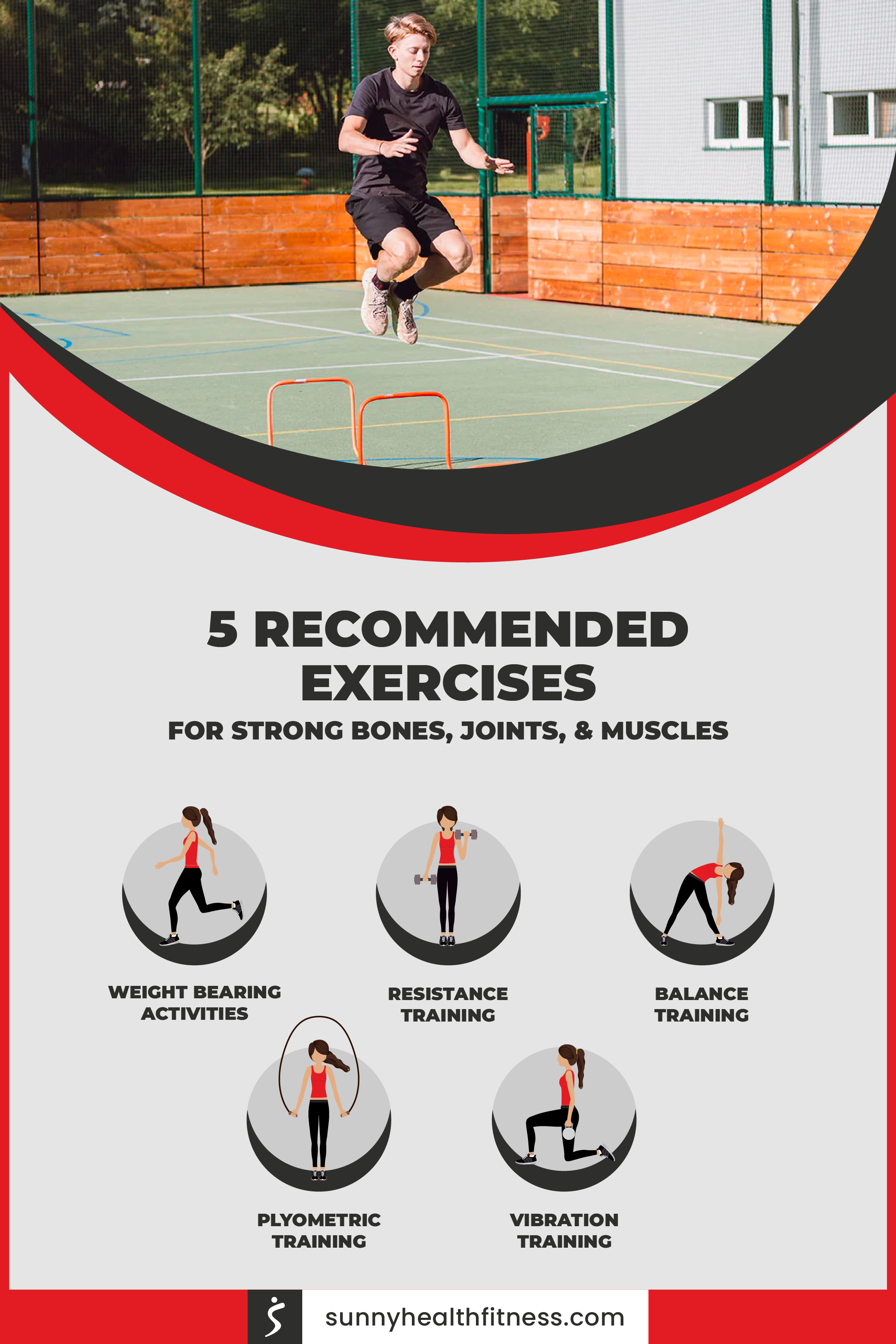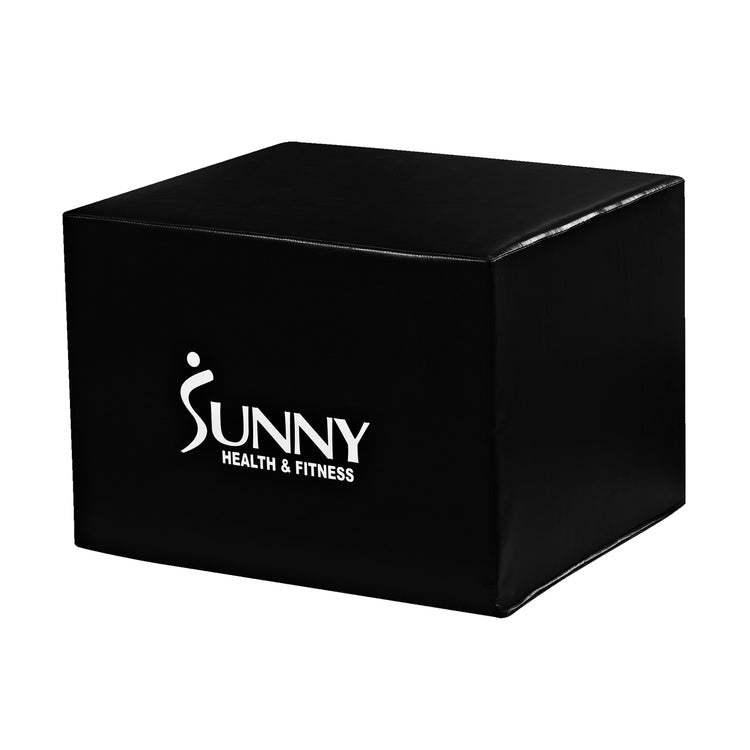Published 10/11/2023, updated 11/3/2025
Although everyone exercises for different reasons, arguably the most common threads are goals of improved health, longevity, and function of our bodies. While aesthetic or performance-based goals can be fun, they ultimately pale in comparison to being able to move safely and efficiently for as much of our lives as possible.
How do we do this? One key factor is exercising with optimal bone and joint health in mind. The higher your bone density, the less likely you are to develop osteoporosis (weak, brittle bones), osteopenia (low bone density), sarcopenia (muscular atrophy/loss), or to sustain a severe injury if an accidental fall occurs(1). Below are 5 different recommended types of exercise to help you strengthen your bones, joints, and muscles.
5 Recommended Exercises for Strong Bones, Joints, and Muscles
1. Weight Bearing Activities
This is a great place to start, particularly if being in a traditional gym environment sounds overwhelming. A weight-bearing activity is pretty much exactly as it sounds – any activity where your bones and muscles are bearing load or weight in a capacity that feels moderately to very challenging(1). Examples of this include brisk walks (at approximately 3-4 miles per hour), jogging, running, hiking, climbing stairs, dancing, and games like tennis, badminton, and pickleball.
2. Resistance Training
Resistance training is another great way to build bone density and strengthen the muscles that support and move your extremities at their joints. Programs centered around resistance training, especially when adhered to and progressed over the course of several years, show significant increases in bone mineral density and reduced risk of fracture(2). Examples of resistance training include weightlifting (either with machines or free weights), resistance bands, Pilates reformers, and body weight exercises (think push-ups, sit-ups, etc.). You can commonly find many of these types of equipment in a gym, but if you prefer to work out in the comfort of your own home, Sunny Health & Fitness has an outstanding offering of strength training equipment as well. I would highly recommend getting started with the Resistance Tube Set, a couple of sets of dumbbells, and a squat rack.
Check out these workouts in the SunnyFit® App for some expert guidance!
3. Balance Training
Balance training is one of the best ways to prevent a fall, especially as we age. Examples of balance training include any single leg movements, slower movement forms like ballet and Tai-Chi, any movement that requires shifting weight from one foot to the other or from one area of your foot to another (i.e.: forward and back) or performing movements on a thick mat or unstable surface. Linked here is Sunny’s folding gym mat.
4. Plyometric Training
Plyometric training, also referred to as “reactive training”, is exactly that – training your body to react to various unexpected forces that can throw off your center of balance. Examples of this include jumping, lunging, skipping, hopping, and power push-ups (hands leave the floor). If you are looking for a product to elevate your plyometric training, Sunny offers a Foam Plyo Box that can be used to challenge height and variety of movements.
There are also many low-impact alternatives to these movements that can achieve a similar effect. Check out this workout on our YouTube channel with Sunny Trainer Dominique here.
These types of movements train your muscles to have a faster reaction time, teaching them to contract faster while exerting as little energy as possible. This will increase your agility and reaction time to obstacles that may otherwise cause you to take a tumble(3).
5. Vibration Training
Another option to maintain and increase bone density is to use a vibration platform. Initially developed to help astronauts maintain bone density during space travel, scientists discovered that astronauts who stood on a vibration platform for just 10-20 minutes daily were able to maintain bone density while in space. This counteracted the 1-2% bone loss astronauts were previously experiencing on a monthly basis(4). Beyond increased bone density, research shows that, when done properly and with medical clearance, it can also reduce back pain and improve strength and balance in older adults(5). It is important to note that research is still currently developing on how vibration therapy compares to other forms of exercise where you are actively engaged in the activity (swimming, biking, etc.).
If you are interested in giving it a try at home, linked here is Sunny’s Fitboard 4D Vibration Platform Exercise Machine.
In Conclusion
Of course, if you have a preexisting condition, be sure to consult with your doctor before proceeding with any of the aforementioned activities. Especially if you are new to some of these methods of training and are at or near elderly age, it is crucial to consider impairments, risk of fractures, health history, and fall/injury prevention(6).
The best time to get started is now. The younger you are, the more opportunity you have to increase bone density and muscle mass as you age, thus allowing for safer movement of joints. Most of our bone mass as adults is built during adolescence, but we still see significant ability to increase bone density into our 20s and 30s – so better late than never(7). Beyond age 40, it is estimated that our bodies experience bone loss at a rate of 0.5% each year. At this point, it is especially crucial to continue exercise to maintain as much bone density and muscle mass as possible(3).
So, give these forms of movement a try, and find a method that fits into your weekly routine. Whatever it may be, I urge you to use exercise as a means to build and/or maintain your bone mineral density and range of motion in your joints. So much of our physical health is in our own hands; don’t hesitate to start prioritizing your bone and joint health today, so you can be stronger tomorrow.































Add Your Name & Email
Please enter your name and email to continue.We won’t display your email publicly.